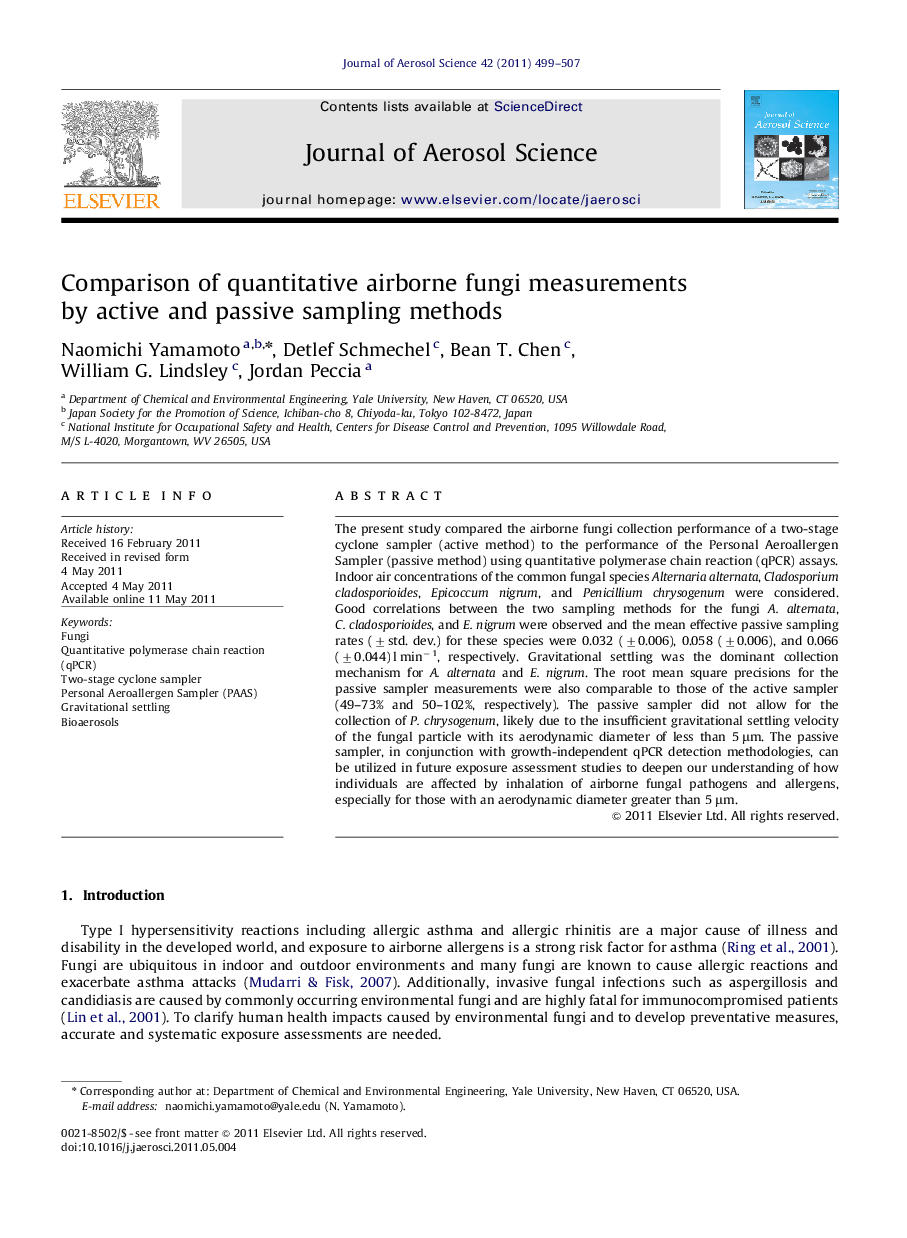| Article ID | Journal | Published Year | Pages | File Type |
|---|---|---|---|---|
| 4452661 | Journal of Aerosol Science | 2011 | 9 Pages |
The present study compared the airborne fungi collection performance of a two-stage cyclone sampler (active method) to the performance of the Personal Aeroallergen Sampler (passive method) using quantitative polymerase chain reaction (qPCR) assays. Indoor air concentrations of the common fungal species Alternaria alternata, Cladosporium cladosporioides, Epicoccum nigrum, and Penicillium chrysogenum were considered. Good correlations between the two sampling methods for the fungi A. alternata, C. cladosporioides, and E. nigrum were observed and the mean effective passive sampling rates (±std. dev.) for these species were 0.032 (±0.006), 0.058 (±0.006), and 0.066 (±0.044) l min−1, respectively. Gravitational settling was the dominant collection mechanism for A. alternata and E. nigrum. The root mean square precisions for the passive sampler measurements were also comparable to those of the active sampler (49–73% and 50–102%, respectively). The passive sampler did not allow for the collection of P. chrysogenum, likely due to the insufficient gravitational settling velocity of the fungal particle with its aerodynamic diameter of less than 5 μm. The passive sampler, in conjunction with growth-independent qPCR detection methodologies, can be utilized in future exposure assessment studies to deepen our understanding of how individuals are affected by inhalation of airborne fungal pathogens and allergens, especially for those with an aerodynamic diameter greater than 5 μm.
► The passive sampler is convenient for indoor, outdoor, and personal air monitoring. ► Good correlations between the two sampling methods for the fungi Alternaria alternata, Cladosporium cladosporioides, and Epicoccum nigrum were observed. ► Gravitational settling was the dominant mechanism for the passive collection of the fungi Alternaria alternata and Epicoccum nigrum. ► The passive sampler can be utilized to collect airborne fungi with an aerodynamic diameter greater than 5 μm.
